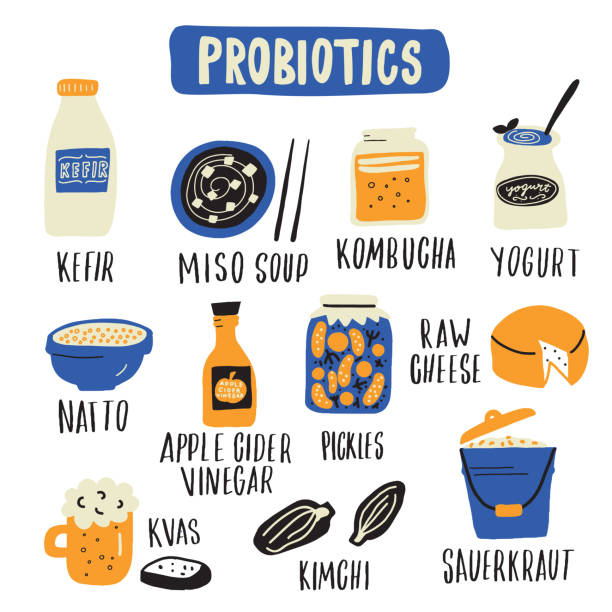What is Fermentation?
Fermentation is a process of breaking down carbohydrates into smaller compounds by enzymes during anaerobic conditions, and during this process, energy is produced in
the form of ATP. Numerous bacteria are
present during fermentation in a variety of ratios.
Metabolic processes such as flavor enhancement, food
storage, and other favorable changes are produced by microbe activity during
fermentation.
Fermentation
- · Microorganisms using carbohydrates (sugars like glucose) for energy to survive
- · Organic substances transfer energy in the form of ATP to every area of the cell
- · Microbes use respiration to produce ATP. Glycolysis occurs during aerobic conditions where oxygen is required.
Process of Fermentation
There are two steps followed in the process of fermentation
1. 1. Glycolysis
2.
Electron transfer
The first step of glycolysis is breaking down sugar
molecules. As glucose is a 6-carbon compound so by chemical reaction of enzymes
it is broken into a 3-carbon compound known as pyruvate. During this process of
conversion of glucose, energy is generated in the form of ATP molecules so this
stage is also called energy investment.
The second stage is energy giving phase. Now phosphorylation
is used to create ATP (energy). Another molecule called NADH is created. When
glyceraldehyde phosphate, a byproduct produced during the first phase is oxidized,
protons and electrons are exchanged, and NADH is produced.
After this reaction electrons are transferred from NADH to pyruvate,
therefore stimulating NAD+ which is used in the glycolysis process during the energy
pay-off phase. Pyruvate is produced as a by-product of the energy pay-off phase.
What happens during the fermentation process?
In the absence of oxygen, microorganisms get their energy
from fermentation. Yeast cells like Saccharomyces cerevisiae perform
fermentation during aerobic conditions when enough sugar is present.
During fermentation, useful microorganisms convert sugar
molecules into ethanol and alcohol, enhancing food's nutritional value and increasing food's shelf life.
Fermented products use digestive enzymes when required.
This is because people have less number of enzymes at birth and they get
lessened with the passage of age. The enzymes needed to break fermented foods are
present in them.
Pre-digestion is assisted by fermentation. When the food is
consumed by any person, bacteria present in food have already broken down sugar
into small molecules during fermentation.
Benefits of Fermentation
Fermented foods contain probiotics and beneficial microbes.
Probiotics can absorb nutrients from food and support gut health. Probiotics also support the immune system because
our intestine produces various anti-bacterial chemicals and microbes cannot
survive in an acidic environment.
Fermentation also aids in neutralizing acidic nutrients,
present in grains, seeds, and nuts, and results in a mineral deficiency.
Neutralizing phytic acid is helpful as it makes up starch and sugar so it will
lessen the ingestion of proteins, lipids, and carbohydrates
Fermentation enhances vitamin and mineral content in food and
boosts its absorption rate. The vitamins and minerals are absorbed by the
body due to the presence of probiotics, enzymes, and microbes present in
fermented food.
 |
Benefits of Fermentation |
Types of Fermentation
Eukaryotes and Prokaryotes both perform fermentation. The
most commonly available and profitable form of fermentation is present in
bacteria and yeast. The most common three types of fermentation are:
- Ethanol Fermentation
- Acetic acid Fermentation
- Lactic acid Fermentation
Ethanol Fermentation
This type of fermentation also known as alcoholic fermentation produces ethanol as a byproduct. It
follows three steps: In the first step, the oxidation process of glycolysis occurs
when the glucose molecule is broken down into pyruvate. Second, the pyruvate molecule
produces acetaldehyde releasing carbon dioxide. Third, acetaldehyde produces
ethanol by removing hydrogen ions from NADH and changing them into NAD+. Carboxylases and oxidases are used in
catalyzing both pathways. Wine and beer are made by ethanol fermentation.
Lactic Acid Fermentation
This process involves the breakdown of starches and sugars to
produce lactic acid and other waste items. Lactic acid and NAD+ are produced
during an anaerobic condition when the chemical reaction takes place in which
pyruvate, a 3-carbon molecule uses hydrogen ions as an electron acceptor from NADH and converts to lactic
acid. The process regenerates NAD+.
Producing and
maintaining nutritious food is the main aim of lactic acid bacteria. Lactic acid
prevents food from deformation and rotting and prevents the body from getting
affected by bacterial diseases. Lactic acid fermentation produces foods like
yogurt, pickles, kimchi, dough bread, raw cheese, etc.
Acetic acid Fermentation
Grain, fruit sugars, and starches undergo fermentation and
result in the production of sour vinegar and sauces. It is also known as the fermentation of vinegar. There are two processes of fermentation involved in the making of vinegar, the first step, yeast (Saccharomyces cerevisiae) is used to
create alcohol/ethanol from sugar, and in the second step, acetic acid bacteria is
used to oxidize ethanol through acetyl CoA.
To make vinegar on an industrial scale, acetobacter bacteria are used. Examples are
wine-vinegar, apple cider vinegar, and Kambucha





0 Comments